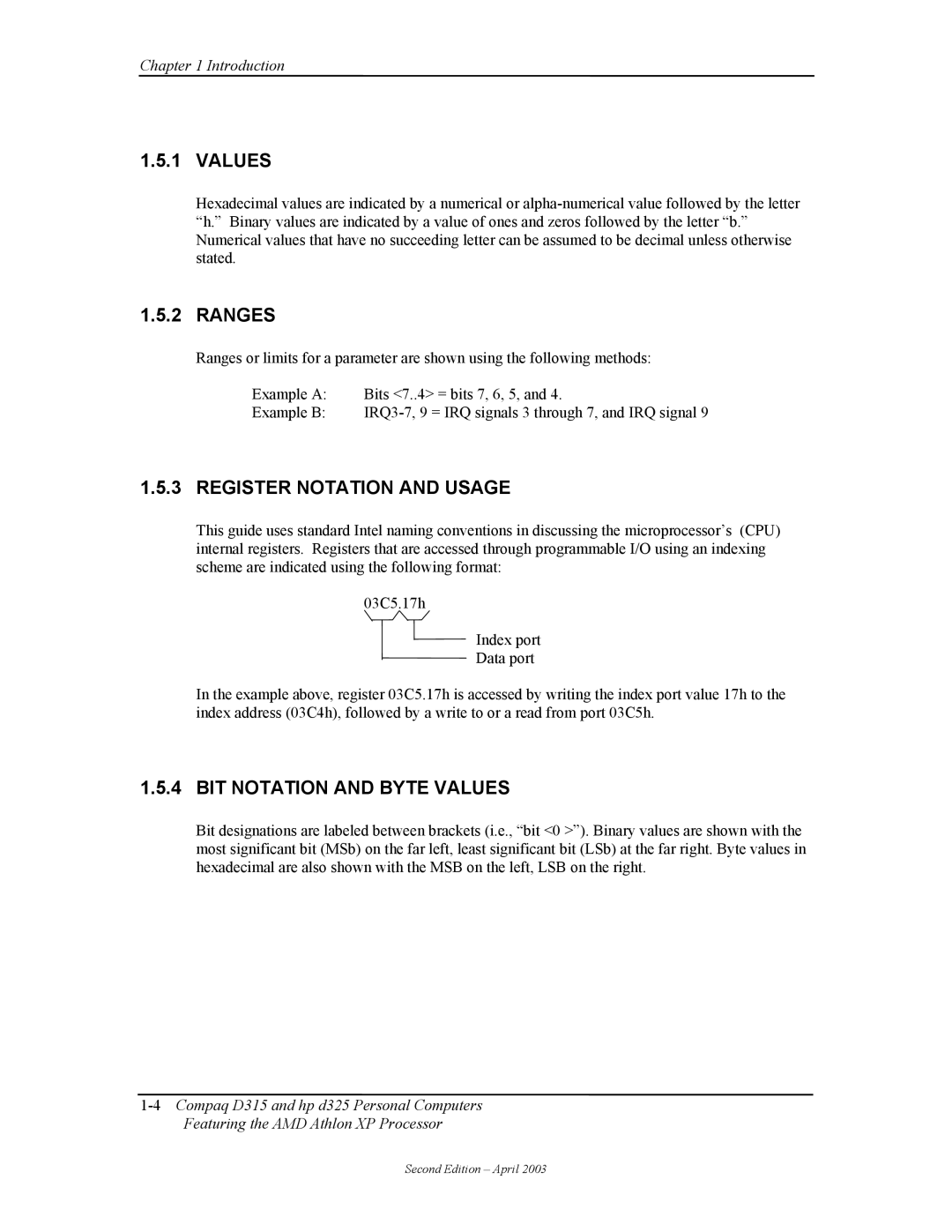
Chapter 1 Introduction
1.5.1 VALUES
Hexadecimal values are indicated by a numerical or
1.5.2 RANGES
Ranges or limits for a parameter are shown using the following methods:
Example A: Bits <7..4> = bits 7, 6, 5, and 4.
Example B:
1.5.3 REGISTER NOTATION AND USAGE
This guide uses standard Intel naming conventions in discussing the microprocessor’s (CPU) internal registers. Registers that are accessed through programmable I/O using an indexing scheme are indicated using the following format:
03C5.17h
Index port
Data port
In the example above, register 03C5.17h is accessed by writing the index port value 17h to the index address (03C4h), followed by a write to or a read from port 03C5h.
1.5.4 BIT NOTATION AND BYTE VALUES
Bit designations are labeled between brackets (i.e., “bit <0 >”). Binary values are shown with the most significant bit (MSb) on the far left, least significant bit (LSb) at the far right. Byte values in hexadecimal are also shown with the MSB on the left, LSB on the right.
Second Edition – April 2003
